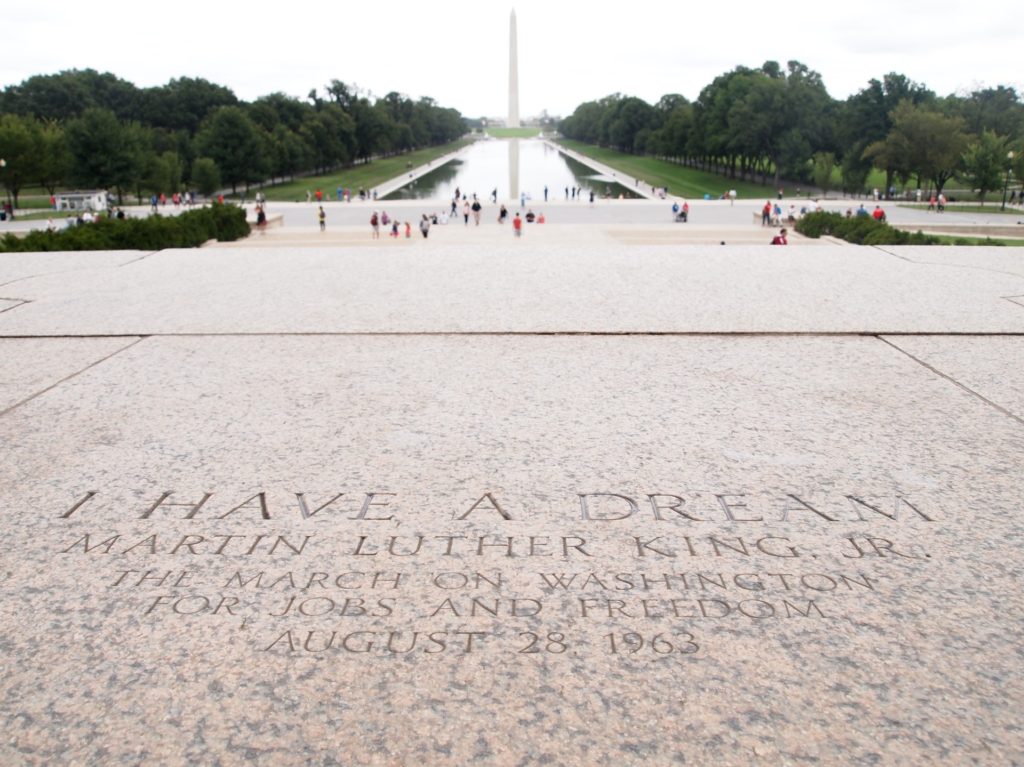Sixty years ago on this date, August 28, 1963, The March on Washington D.C. for Jobs and Freedom was the largest civil rights rally in American History. I was almost ten years old and living in abject poverty with my family in the segregated South. My parents did not have jobs outside of working in the cotton fields.
According to the book, Marching to Freedom: The Life of Martin Luther King, Jr., the march was strategically planned by two Black leaders, Bayard Rustin and Norman Hill. Their white friend, Tom Kahn, helped. In a letter to A. Phillip Randolph, the only Black member of the AFL-CIO labor union, they suggested this mass march to help Black people get jobs.
Mr. Randolph had previous experience with mass marches. In 1941, he planned a mass march on Washington to protest the lack of jobs for Black people in wartime industry. President Roosevelt called him to the White House and asked him to cancel the march. He refused. When the President agreed to create the Fair Employment Practices Commission, the march was called off. The purpose of this new commission was to forbid racial discrimination in industry.
In 1948, Randolph threatened that Black men would not register for the draft unless segregation was banned in the armed forces. Shortly afterwards, President Truman integrated all U.S. military bases and units. Randolph was not done. In 1957, he led 20,000 people to Washington to mark the third anniversary of the Supreme Court’s order to end segregation in public schools. President Eisenhower was urged by the marchers to speak for civil rights. The next year, Randolph organized a Youth March in Washington. Nearly 10,000 Black and white students marched to the Lincoln Memorial to protest racial inequality.
The demonstrations in Birmingham, Alabama had ripped open the nation’s conscience. Black people realized they did not have to have a life of oppression. They had hope! The battle in Birmingham stirred the civil rights movement full force.
Dr. Martin Luther King, Jr. and the nation’s other Black leaders joined Randolph in his call for a march on Washington. Many other well-known Black organizations planned for the march. Dr. King suggested the march had a broader goal than jobs. The goal should be for the rights of all Black people. The other leaders of the organizations agreed.
Dr. King and other Black leaders appealed to white leaders to join the march. Their struggle was justice against injustice. Many white leaders of organizations agreed to join and religious leaders across the nation encouraged their congregation to support the march. Mayors in big cities gave employees the day off to join the march. Every precaution was taken to make sure the march was lawful, peaceful, and nonviolent. They had the support of the Washington Police Department.
The marchers were asked to travel to Washington by train or bus. This was thought to reduce the threat of traffic tie-ups. The marchers planned for a long hot day. Fire hydrants were turned into drinking fountains, food vendors had space, and first aid stations were set up. In case of trouble, more than 2,000 policemen and 2,000 National Guardsmen were on duty. Nearby, 4,000 Army troops and Marines were ready if needed. In addition, 2,000 marshals were on duty.
Approximately 250,000 people gathered at the Lincoln Memorial to wait for the speeches to begin. On the sidelines, about 50 members of the American Nazi Party watched. They shouted at and booed the marchers but police officers kept them from interfering.
Prior to the speeches, the civil rights leaders met with President Kennedy in the White House. While the crowd waited for the speakers, they were entertained by well-known singers and Hollywood actors. After returning to the Lincoln Memorial, one by one they stepped before the microphone and spoke to the marchers and the world. Well known gospel singer, Mahalia Jackson sang. Her stirring performance readied the crowd for the words of the next speaker.
As Dr. King began to speak, a hush fell over the crowd. His voice roared out to the crowd. “I have a dream,” he cried. The crowd roared back, “Tell us!”
“I have a dream —that the sons of former slaves and the sons of former slave owners will be able to sit together at the table of brotherhood.” The crowd encouraged him to continue.
“I have a dream that my four little children will one day live in a nation where they will not be judged by the color of their skin, but by the content of their character.”
This powerful speech was entitled, “I Have a Dream.” The author, Robert Bleiweiss, wrote, “Dr. King’s words summarized the centuries of anguish and injustice, but also described a world in the future in which people of all races would be truly free.”
Francie Mae. August 26, 2023
Reference
Bleiweiss, Robert M. Editor. 1968. Marching to Freedom: The Life of Martin Luther King, Jr. Middletown, Connecticut. American Education Publications.
